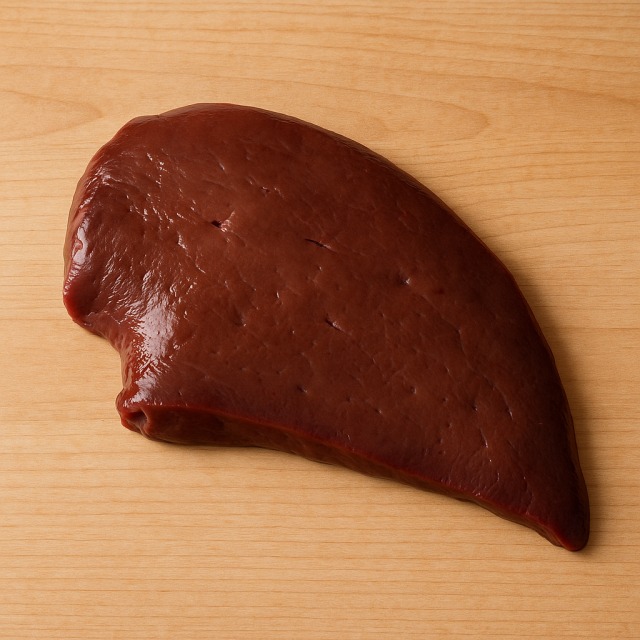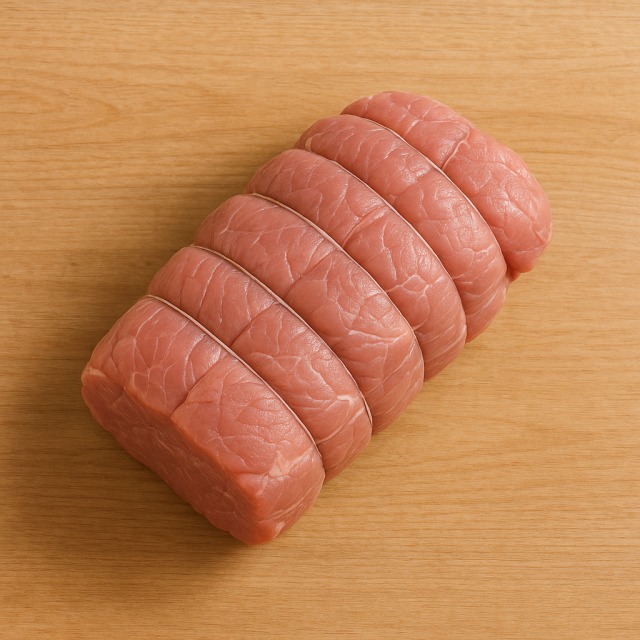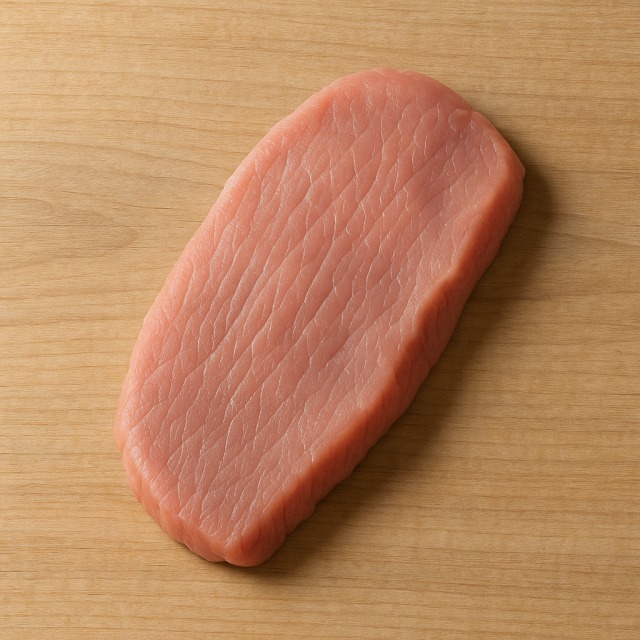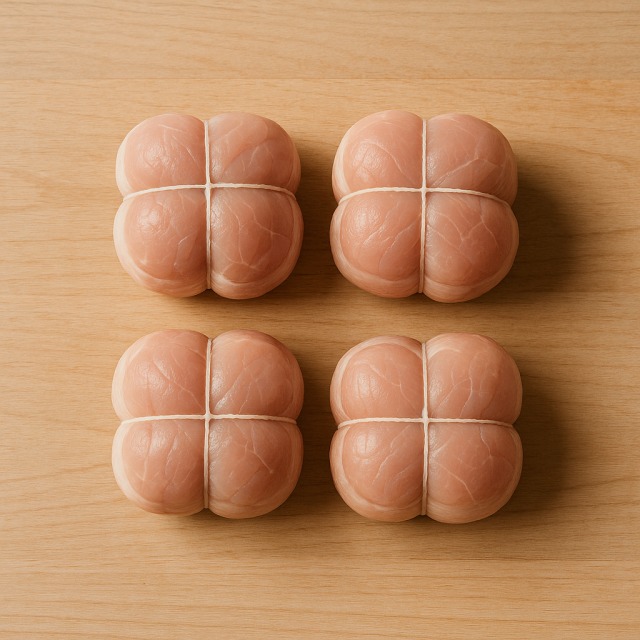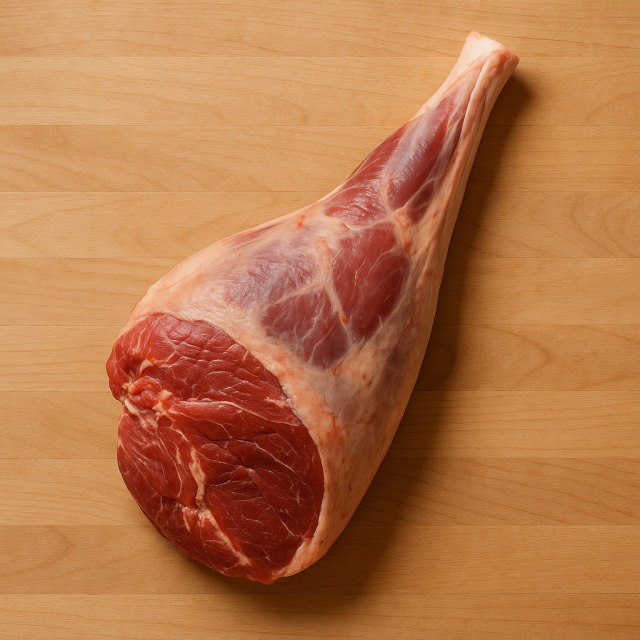Calorie Chart / Meat & Eggs / Veal shank
How Many Calories Are in Veal shank?
Calculation of the nutritional value & Recommended Dietary Intake of veal shank
For g and a calorie requirement of kcal
| Calories 275 kcal | Proteins 29 g | Lipids 18 g | Carbohydrates 0 g |
| 14% | 39% | 27% | 0% |
Health benefits of veal shank
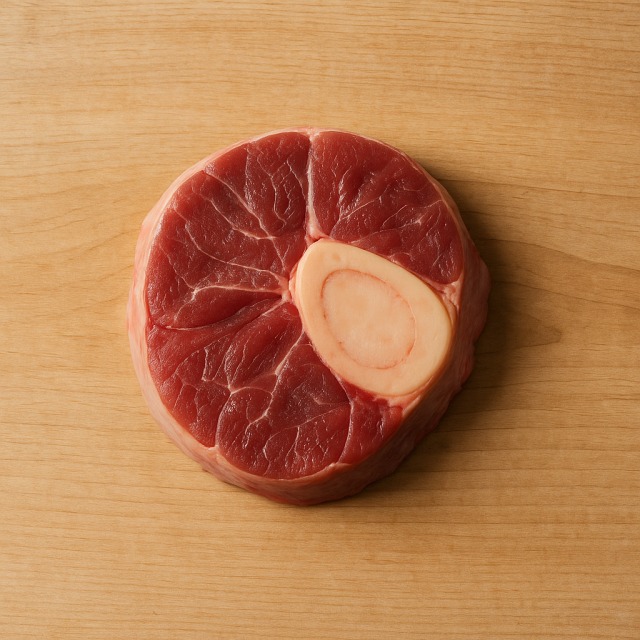
Veal shank - 100g
Calories 183 kcal
Proteins 19 g
Lipids 12 g
Carbohydrates 0 g
Veal shank is considered a moderate-calorie cut of meat: it delivers flavor and mouthfeel without reaching the high-calorie load of fattier beef or lamb cuts. Those watching their calories, therefore, find it an interesting compromise between taste and diet.
Nutritionally, veal shank supplies high-quality proteins rich in essential amino acids, while its connective tissue slowly melts into collagen when braised. Collagen may contribute to joint comfort and skin elasticity, even if its benefits remain partly speculative. On the micronutrient side, the cut provides vitamin B12, niacin (B3), and vitamin B6, all involved in energy metabolism—useful when you want to turn the calories you eat into usable energy. Among minerals, zinc helps immune function, selenium offers antioxidant protection, and phosphorus supports bone health. Because the muscle is relatively lean and the marrow proportion is limited, the calorie density stays moderate compared with other bovine cuts.
Historically, veal shank is the star of the Italian dish "osso buco," first documented in 19th-century Milan. Slow cooking in wine and vegetables tenderizes the meat and extracts gelatin, giving the stew its silky texture while keeping calories under control thanks to long, moist heat rather than added fat. Knowing this heritage allows you to choose cooking methods that maximize taste without unnecessary calories.
Tips for incorporating veal shank into a balanced diet
To keep an eye on calories while enjoying full flavor, favor moist, slow preparations. A classic osso buco can be cooked with diced tomato, carrot, and celery; the vegetables stretch the portion, add fiber, and dilute overall calories per plate. Finish with a gremolata of lemon zest and parsley instead of a butter-based sauce.
If you prefer a lighter lunch, serve braised veal shank on a bed of brown rice or fluffy rice and steamed broccoli. The fiber of whole grains and greens increases satiety, helping you naturally curb calories at the next meal.
Shredded leftover shank can enrich a soup in the spirit of beef bourguignon remakes: add mushrooms and a touch of cream sauce lightened with stock. Thanks to the already-gelatinous cooking juice, the texture stays creamy even with fewer calories than most cream soups.
Finally, remember that portion size is as important as the intrinsic calories of veal shank. A slice of about 150 g (bone included) generally fits into a balanced meal, especially when half of the plate is occupied by vegetables.
Frequently Asked Questions
- How many calories are in veal shank?
- Veal shank provides 183 kcal per 100 g.
- Is veal shank fattier than chicken breast?
- At 12 g of fat per 100 g, veal shank is richer than chicken breast but still lower in fat—and therefore in calories—than many cuts of pork or lamb.
- Does long cooking change the calorie content?
- The braising process does not remove calories; it simply redistributes fat and converts collagen to gelatin. The main change in calories per serving comes from the ingredients you add, such as wine or oil.
- Can I freeze cooked veal shank without increasing calories?
- Yes. Freezing does not alter macronutrients, so the calories remain the same after thawing and reheating.
- What is a low-calorie side dish for veal shank?
- Steamed green beans or a bowl of vegetable soup add bulk and nutrients while keeping extra calories minimal.
Similar foods
Information provided by Calorie Menu may contain inaccuracies or errors. It cannot, under any circumstances, substitute medical advice or medication.
